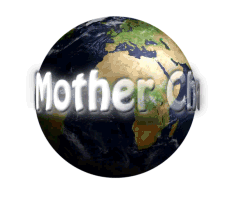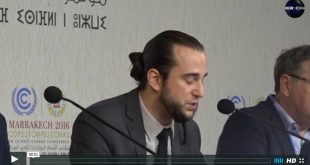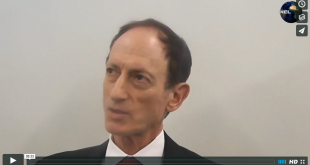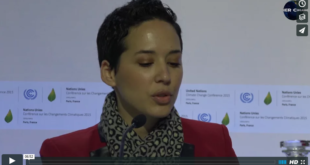As a follow up on the agreed Global Goal on Adaptation requirement as per Paris agreement, panel speakers, Mr Harjeet Singh (Action Aid), Mr Sandeep Chamling Rai (WWF Intl.) and Mr Sven Harmeling (Care Intl.) present and speak on the launch of their Global Goal on Adaptation report and the ultimate objective of climate change action globally.
Key reasons for the need to have a Global Goal on Adaptation (GGA), was due to fact that there has been much more focus on the mitigation issues than those of adaptation, over last several years, and the tendency to forget that the ultimate objective of climate change is ‘Safety and Security’ for all, particularly the poor and vulnerable who are facing the climate change impacts daily as well as ecosystem impacts.
Historical emissions that are causing current impacts, clearly indicate that its the injustice that people are facing at ground level, it also increases the inequality that only exists at the global and local levels – Adaptation needs to be highlighted and the GGA does exactly that at this conference, which has been researched and a white paper produced GGA – ‘From Concept to Practice’ documented.
The Paris agreement resulted in lifting of the bar on adaptation in the whole discourse, making it equal to the mitigation front, however, with most countries having put forward their INDC’s, if we review these, it is very clear that we are heading towards 3 degrees +1 in temperature, making it critical that the GGA, in terms of how to bridge the gap and how the countries, people and ecosystems be able to manage and survive with the increased temperatures. Each developing country needs to assess their adaptation needs, capacity and support they may require, but we also need a science-based adaptation finance target moving forward, with recent reports, e.g. UN GAP report, etc. indicating between 10-12 billion dollars funding currently available for Adaptation and future funding doubled by 2025 to approximately 20 billion US dollars annually, whereas UNEP have estimated that future funding for adaptation would be closer to 250-500 billion annually by 2050 – indicating a very wide gap in the finance for adaptation, not only on the part of mitigation.
It has become fairly clear at this stage during recent negotiations that there are numerous applications to the GGA, with developing countries embracing the concept and put in context of the discussion on how should the guidelines for national communications on adaptation look like, including the opportunity to bring adaptation onto an equal footing with mitigation. In terms of 2018, it’s becoming increasingly important that we need to instil more mitigation ambition by this time, but we also need to scale up adaptation action, and with political momentum building towards 2018, which can really be utilized to the fullest extent, there will be reviews of all these elements which will come together to build human security to climate adaptation and help countries manage the challenges we are facing and currently dealing with.
The recognition that it is a global challenge – it relates to everyone and finding solutions together is strategically very important for our and future generations survival!
Links:
http://www.actionaid.org/news/climate-high-level-meeting-cop22-opens-actionaid-calls-commitments-finance (Harjeet Singh)
http://climate-energy.blogs.panda.org/experts/ (Sandeep Chamling Rai)
http://www.care-international.org/ (Sven Harmeling)
 Mother Channel Environmental, climate change news and media.
Mother Channel Environmental, climate change news and media.



